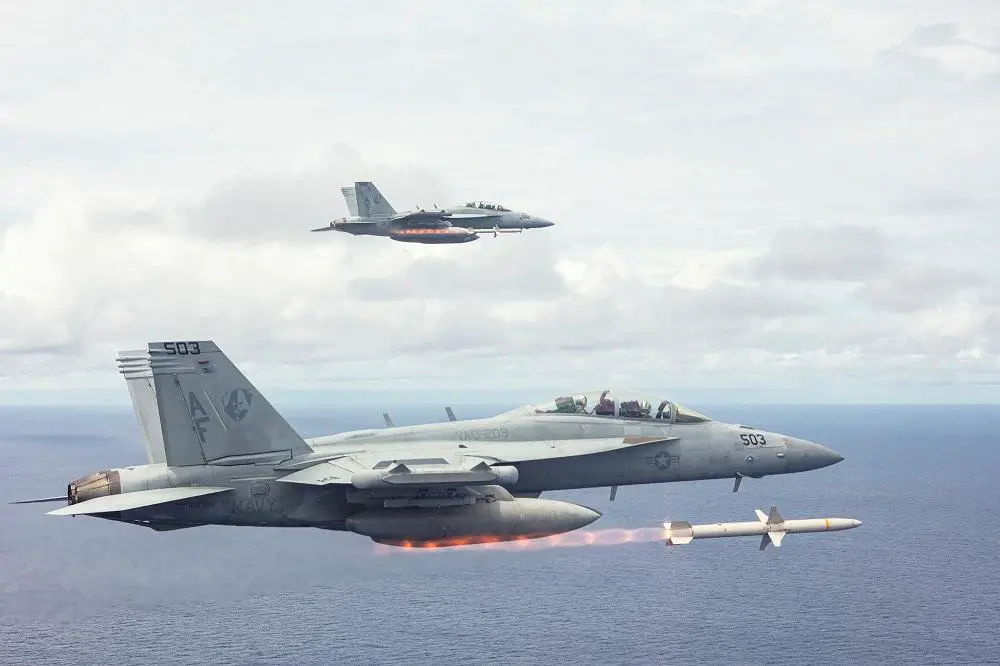EA-18G Growlers from the “Star Warriors” of Electronic Attack Squadron (VAQ) 209 simultaneously fire two AGM-88 High Speed Anti-Radiation Missiles (HARM) during a training exercise near Guam. Supporting a free and open Indo-Pacific and operating out of Andersen Air Force Base on the “Forward Edge” while utilizing the Marianas Islands Range Complex, VAQ-209’s live-fire exercise provided valuable training to ordnance personnel and aircrew alike. As the US Military’s only Reserve EA-18G squadron, VAQ-209 is currently forward deployed to Japan and operating across the Indo-Pacific as the expeditionary VAQ squadron currently assigned to Commander, Task Force (CTF) 70.
The AGM-88 HARM (High-speed Anti-Radiation Missile) is a tactical, air-to-surface anti-radiation missile designed to home in on electronic transmissions coming from surface-to-air radar systems. It was originally developed by Texas Instruments, production was later taken over by Raytheon Corporation. The AGM-88 can detect, attack and destroy a radar antenna or transmitter with minimal aircrew input. The proportional guidance system that homes in on enemy radar emissions has a fixed antenna and seeker head in the missile’s nose. A smokeless, solid-propellant, booster-sustainer rocket motor propels the missile at speeds over Mach 2.0.

The Boeing EA-18G Growler is a carrier-based electronic warfare aircraft, a specialized version of the two-seat F/A-18F Super Hornet. This attribute enables the Growler to perform escort jamming as well as the traditional standoff jamming mission (Radar jamming and deception). The EA-18G replaced the Northrop Grumman EA-6B Prowlers in service with the United States Navy. The Growler’s electronic warfare capability is primarily provided by Northrop Grumman. The EA-18G began production in 2007 and entered operational service with the US Navy in late 2009. Australia has also purchased twelve EA-18Gs, which entered service with the Royal Australian Air Force in 2017.
Electronic Attack Squadron 209 (VAQ-209) is a United States Navy Reserve electronic attack squadron. Known as the “Star Warriors”, the squadron flies the EA-18G Growler carrier-based electronic warfare jet aircraft. It is assigned to the Tactical Support Wing and based at Naval Air Station Whidbey Island, Washington. Its mission is: “To safely train to attain and maintain mobilization readiness for immediate employment in event of war or national emergency.” VAQ-209 remains at their home base of Naval Air Station Whidbey Island, Washington. They continue to complete training and routine flights around the areas of Washington and Oregon.
















